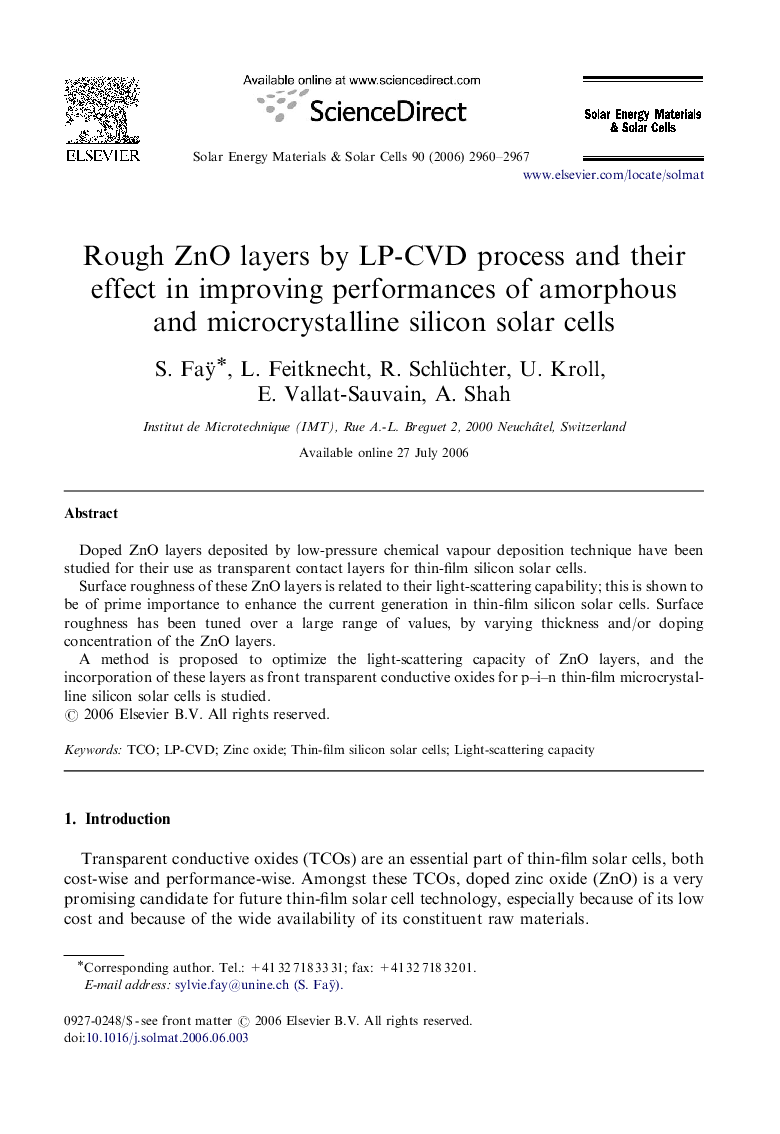| Article ID | Journal | Published Year | Pages | File Type |
|---|---|---|---|---|
| 80531 | Solar Energy Materials and Solar Cells | 2006 | 8 Pages |
Abstract
Doped ZnO layers deposited by low-pressure chemical vapour deposition technique have been studied for their use as transparent contact layers for thin-film silicon solar cells.Surface roughness of these ZnO layers is related to their light-scattering capability; this is shown to be of prime importance to enhance the current generation in thin-film silicon solar cells. Surface roughness has been tuned over a large range of values, by varying thickness and/or doping concentration of the ZnO layers.A method is proposed to optimize the light-scattering capacity of ZnO layers, and the incorporation of these layers as front transparent conductive oxides for p–i–n thin-film microcrystalline silicon solar cells is studied.
Related Topics
Physical Sciences and Engineering
Chemical Engineering
Catalysis
Authors
S. Faÿ, L. Feitknecht, R. Schlüchter, U. Kroll, E. Vallat-Sauvain, A. Shah,
